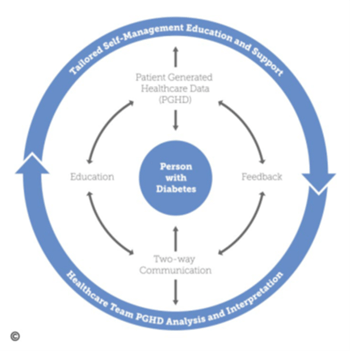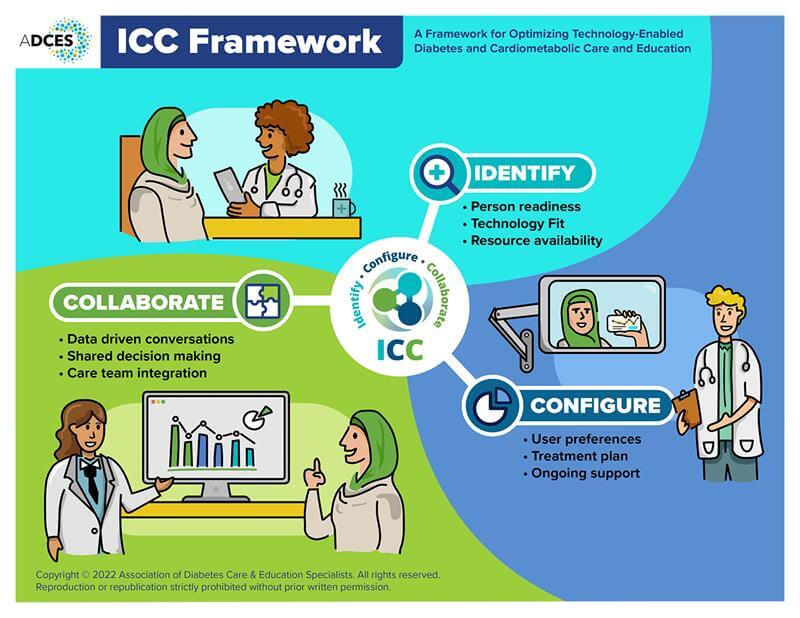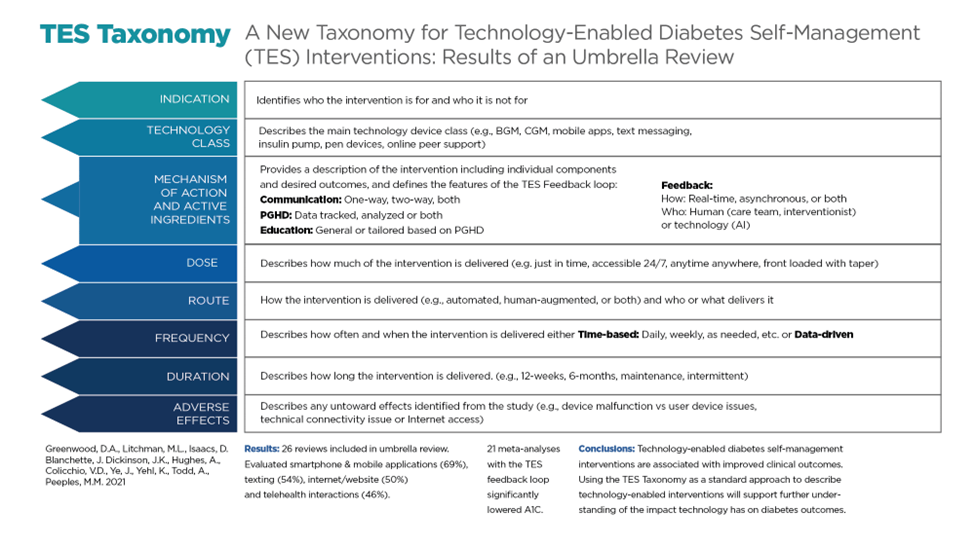
Research on Diabetes Technology
Offering research-based guidance to practicing diabetes care and education specialists on technologies that facilitate disease management
A Systematic Review of Reviews Evaluating Technology-Enabled Diabetes Self-Management Education and Support (2017)
Citation: Greenwood DA, Gee PM, Fatkin KJ, Peeples M.
A Systematic Review of Reviews Evaluating Technology-Enabled Diabetes Self-Management Education and Support. Journal of Diabetes Science and Technology. 2017;11(5):1015-1027.

Implications for:
- 2-way communication
- PGHD analysis
- Education
- Feedback
A Framework for Optimizing Technology-Enabled Diabetes and Cardiometabolic Care and Education (2020)
As technology evolved, the practice of the diabetes care and
education specialist expanded from health system services (i.e., inpatient,
outpatient, case management) to community/employer-based services (i.e., weight
reduction, peer coaching, health campaign programs) to remote monitoring and
telehealth services to fully embrace the chronic care model.
Citation: Greenwood DA, Howell F, Scher L, et al. A Framework for Optimizing Technology-Enabled Diabetes and Cardiometabolic Care and Education: The Role of the Diabetes Care and Education Specialist. The Diabetes Educator. 2020;46(4):315-322.

Implications for:
The diabetes care and education specialist is positioned to advocate for technology integration, adoption, and use of the ICC framework in practice, within organizations, and for populations. The standardized process includes the following 3 steps:
- Identify appropriate technologies using a shared decision-making process
- Configure the technology and the required workflow
- Collaborate for ongoing interpretation and use of PGHD.
The Identify-Configure-Collaborate (ICC) framework provides a standardized approach for the diabetes care and education specialist to leverage the unique skills required to identify, configure, and collaborate with the person with diabetes and care team in the initial and ongoing use of technology to improve outcomes.
A New Taxonomy for Technology-Enabled Diabetes Self-Management Interventions: Results of an Umbrella Review (2021)
This publication is an update to the 2017 umbrella review and expands the TES and ICC models to data collection supporting and informing ongoing research and understanding of the impact of diabetes technology.
Citation: Greenwood DA, Litchman ML, Isaacs D, et al. A New Taxonomy for Technology-Enabled Diabetes Self-Management Interventions: Results of an Umbrella Review. Journal of Diabetes Science and Technology. August 2021.

Implications for:
Technology-enabled diabetes self-management interventions continue to be associated with improved clinical outcomes. The ongoing rapid adoption and engagement of technology makes it important to focus on uniform measures for behavioral/psychosocial outcomes to highlight healthy coping.
Using the TES Taxonomy as a standard approach to describe technology-enabled interventions will support understanding of the impact technology has on diabetes outcomes.


